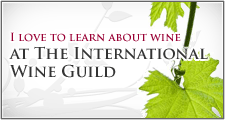Happy Accidents:
In the fine tradition of how wine is thought to have been discovered in the first place, Champagne was come across quite by accident. Indeed, it was engineered more from a shift in global climate than any stroke of brilliance in 16th century renaissance Europe (which was experiencing no shortage of innovative ideas). And like many fine discoveries, it took over a century for the idea catch hold and truly be cherished.
Prior to the late 1400’s, the Champagne region of France was in a neck and neck race with Burgundy to produce the finest wines for the French King. Because of its geological proximity to rivers that could easily reach Paris, it typically had the upper hand. But that all changed when a dramatic climate shift moved through the Northern hemisphere in the 1490’s.
Plummeting temperatures not only caused the premature freezing of major rivers like the Thames, but also brought with them a shorter growing season that hit Champagne particularly hard. Yeast that converted the sugar in pressed grape juice to alcohol suddenly stopped processing mid-season. When the spring came and the temperatures began to rise again the yeast began processing sugars for a second fermentation. This produced an excessive amount of carbon dioxide in the wine and that, as they say, was that. Wine from Champagne would never be the same.
An Innovator’s Passion
French royalty was repulsed by the new vintages coming out of the Champagne region and Burgundy picked up nearly all of Champagne’s market share. It would remain this way until the mid-1600’s when the Catholic Church sent in a specialist to help recoup its investment in the failing vineyards. His name was Dom Perignon.
At first, Dom Perignon’s orders were to find a way to decrease the bubbles in the wine, but with changing fashions came a shift in appreciation for the bubbly that was particularly strong across the channel in England. Here the decadent reign of Charles II introduced the idea that Champagne was not only good, it was hip. The trend began simultaneously in French circles and Dom Perignon was instructed to make more bubbles. The techniques pioneered by Dom Perignon are still in use today and form the foundation for the best bubbly found anywhere in the world.
Although the challenge of preventing bottles from exploding as the result of the internal pressure would fluster the French for many years to come (it is estimated that over half of the Champagne bottled would explode during shipment), the city of Reims in Champagne became an official innovator and supplier of the wine in 1728. As a tribute to his passion and innovation, Dom Perignon adorns the label of the most prestigious bottles from the largest Champagne house in the world - Moet & Chandon.






